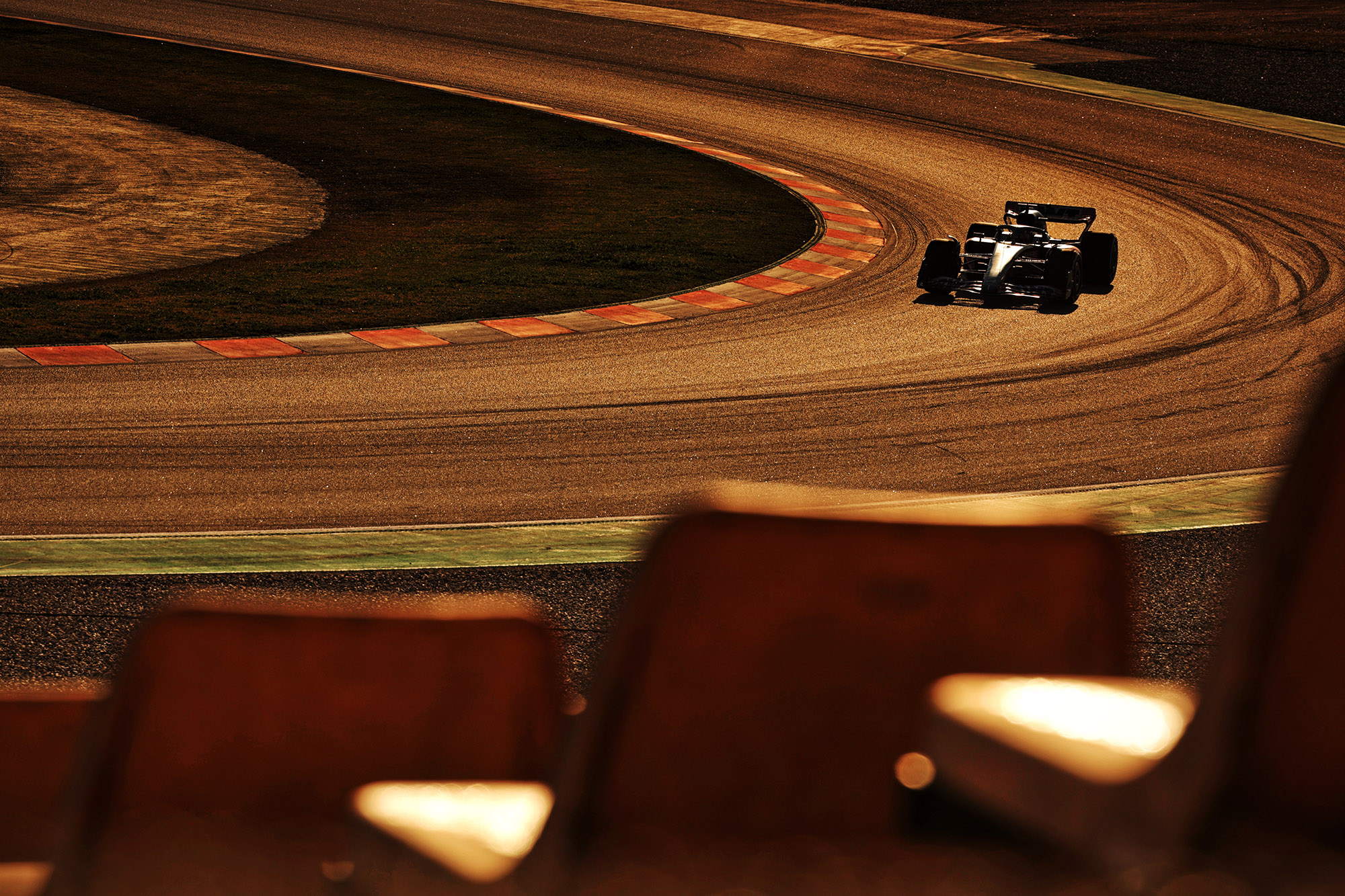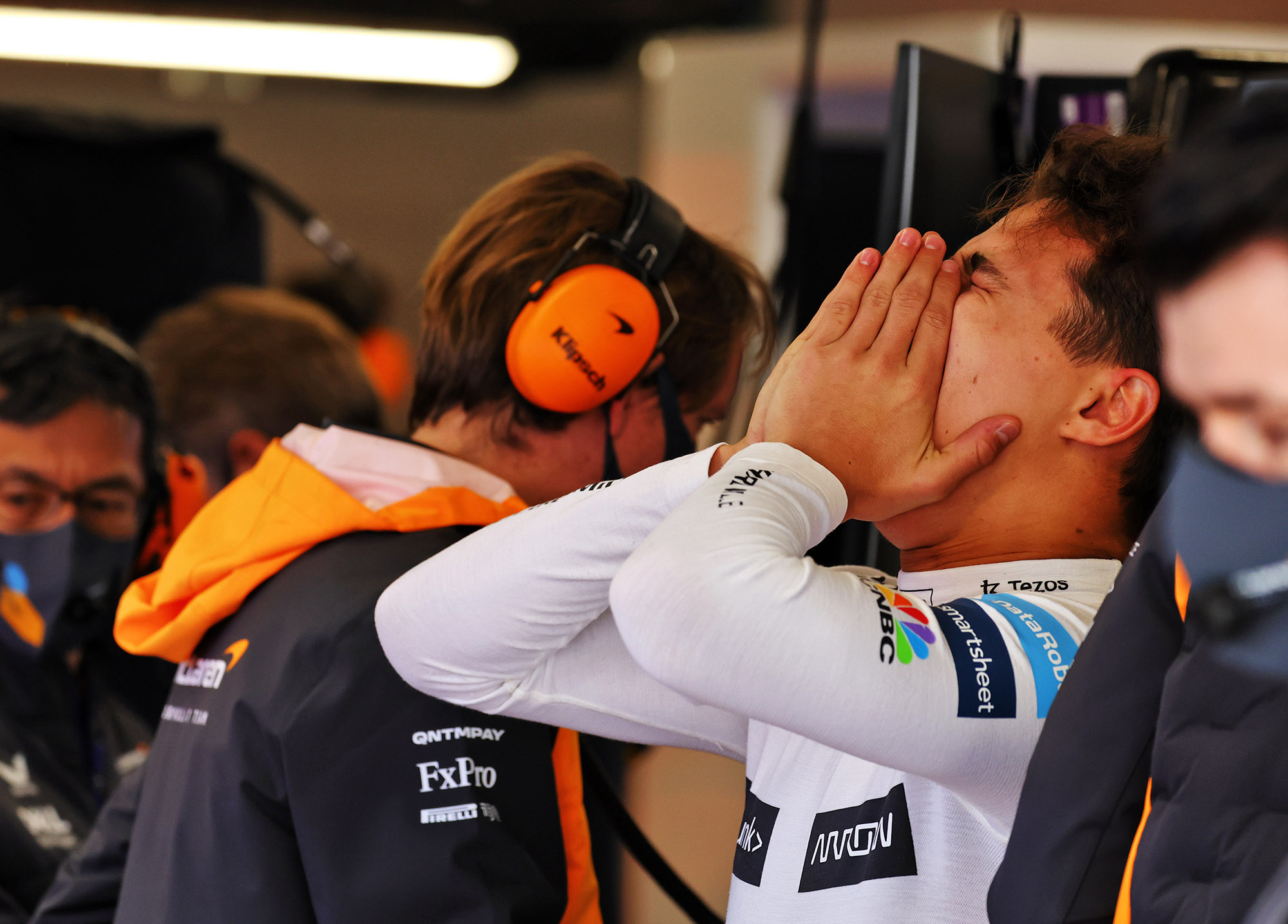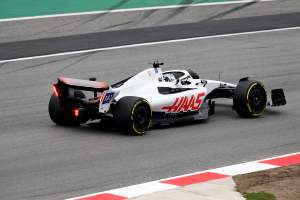Formula 1 entered a brave new era this week with a radical set of technical regulations that set out to improve ‘the show’.
And yet F1 decided that the premier of this ‘show’ was to be as secret as possible.
Liberty should once and for all and categorically be applauded for all the changes it has made to our sport that have given us several new ways of accessing F1 via social media, Drive to Survive and non-stop content.
And yet we have just witnessed its first retrograde step: trying to close down all coverage of the first time cars hit the track properly in this new ‘show focused’ regulation era.
Only those on the inside will know why they made this decision but stories of broadcasters and teams having been put under significant and strange restrictions added to the more public black-out of live pictures and timing show a clear determination that this test was going to be as ‘dark’ as possible.
Of course social media has decided without any evidence that this is because Bahrain has paid F1 to be the first location where these cars are being seen openly for real. But the official line from F1 is that it wanted to protect the teams from being under pressure from media and fans as they ’shookdown’ new cars.
If either is true it is still curious. Liberty has grown F1 because of its new openness, access and content focus but now it has its ‘Concorde moment’. We used to be able to fly supersonic across the Atlantic and now we can’t. Tests have been covered extensively with fans in attendance for years and now they are not.

However it’s Liberty’s train set so it can make that decision based on its objectives and commercial priorities that we are not party to.
And there the story should end. Except that this news and the annoyance of some F1 fans at the attempted blackout prompted a number of prominent industry figures and older fans to act as ‘gatekeepers’ to our sport.
Drive to Survive, a complete rethink of social media and exponential increase in content production post the Bernie Ecclestone era has seen an unprecedented influx of new fans into F1.
It is always said that there is not a silver bullet in business but Drive to Survive is the exception to that rule. Anecdotally everyone knows a daughter, niece or friend (and these new fans are often female) that has ‘found’ F1 via the Netflix phenomenon.
And most in the sport are reaping the benefits. None more publicly than Red Bull with its two headline sponsor deals that allegedly provide $150million of revenue a year which has been attributed to growth, particularly in the USA.
Our own data at The Race Media shows that both our main brands, The Race and WTF1, are benefiting from the Drive to Survive bounce with more younger, richer, female fans mainly from the USA.
This new audience only know ‘always on’ and open access so when they found out this test had gone ‘dark’ with no live timing or live pictures they showed their displeasure on their favourite social media channel. And why wouldn’t they? An expectation and culture of access has been built that was then, without real explanation, removed.
But for some old hands this was a sign of entitlement. The fact that they had ‘managed’ with weekly magazines, Ceefax and patchy TV coverage for all their F1 info seemed to mean that the new fans should not expect anymore. And the boomers called the Drive to Survivers out and looked just like … boomers…
This has been a recurring theme in recent years with old fans belittling new fans’ lack of knowledge or expectations of Drive to Survive levels of access. These old fans have taken on the unconscious, unofficial role of gatekeepers.
Luckily the new fans don’t seem to be put off and both call out these gatekeepers and seek out their own sources of knowledge and entertainment that the old guys don’t see as relevant.
In moments like this there is opportunity if you understand the dynamics. And so at The Race we rushed forward the launch of our new The Race Hub Live concept to be rewarded with our biggest ever web audience and challenges of managing said spike in traffic whilst over at the favourite home of the Drive to Survive generation, WTF1, the team talked on YouTube from their houses about stuff that was going on in Barcelona for eight hours each day to try to keep everyone updated and entertained.
A huge thank you to everyone who joined us for our #F1Testing streams 🙏
24 hours of live chat and updates, hope you enjoyed it. We’ve loved seeing all your nice messages and where you were watching from 🧡 pic.twitter.com/7y5hsSeFYx
— WTF1 (@wtf1official) February 25, 2022
And the data from that ‘watchalong’ phenomenon, that the gatekeepers wouldn’t understand, showed the desire from this new audience for content longer than a TikTok.
On average the millennials kept their attention on the stream for over six minutes with a huge number of the 20,000 concurrent viewers enjoying the ‘bantz’ for hours at a time with an estimated 1.5million people dipping in and out of the stream.
So out of the curiously dark test we have more data, we have more insight and it’s all positive.

The new fans are as passionate and hungry for access to our sport as the gatekeepers – those that understand that one man’s Ceefax is another female’s Twitch stream with Lando will win.
And I am sure like us here at The Race Media, the new legions of marketing analysts at F1 are looking at the audience data from this test with the vigour of Ross Brawn’s team looking at the on track numbers.
And if F1 sees the same as us it will rush harder and faster towards even more access and content which might confuse the gatekeepers but will keep the dollars and fans rolling in for those in the industry that can look forward and not believe it was better the last time we had ground effect.



